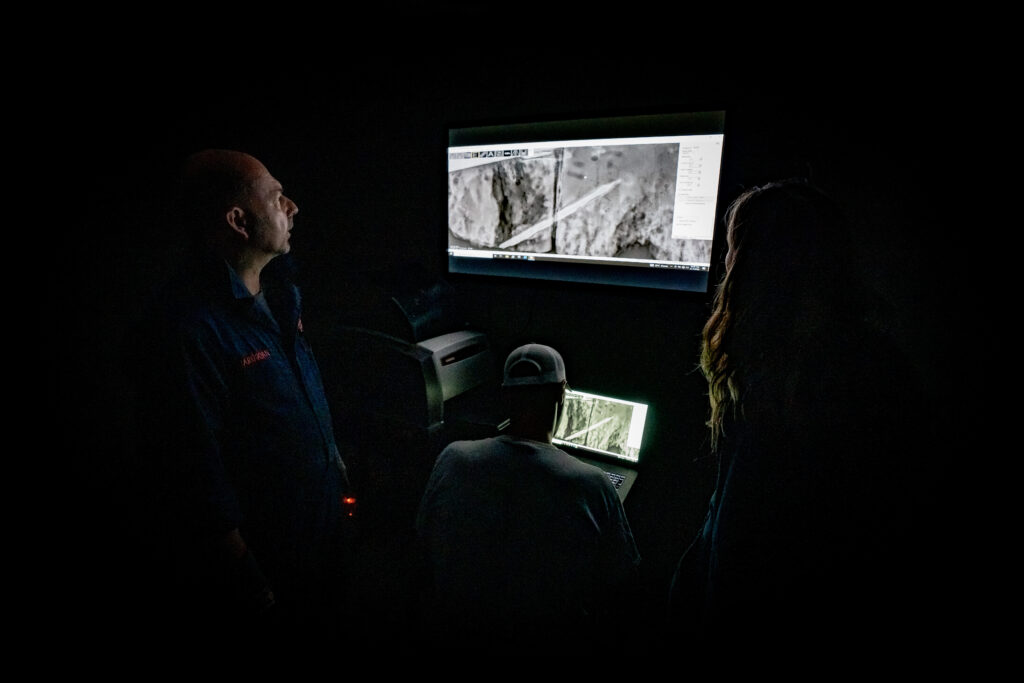The Alabama Historical Commission, which has been involved in efforts to identify and preserve the Clotilda since 1997, said it cannot be raised from underwater “using existing technology.” (Courtesy of the Alabama Historical Commission)
The Alabama Historical Commission (AHC) plans to keep the last known vessel to transport enslaved Africans to the United States in its current location in the Mobile River, saying the ship is too deteriorated to be raised above water.
The Clotilda transported 110 Africans from what is now Benin to Mobile, Alabama, in 1860, more than 50 years after the United States outlawed the international slave trade.
The voyage was arranged by Mobile businessman Timothy Meaher, who made a bet that he could smuggle slaves into the country without being caught. After the ship’s arrival, the captors set it ablaze to destroy evidence of their crime.
The AHC, which has been involved in efforts to identify and preserve the Clotilda since 1997, said it cannot be raised from underwater “using existing technology.”
“This phase of the investigation was vital in determining the next steps for the Clotilda. With this report, the Alabama Historical Commission can continue with its preservation plan and continue preserving this tremendous artifact and its history,” said Alabama Historical Commission Chairman Eddie Griffith in the announcement.
The survivors of the Clotilda went on to establish Africatown, a community near Mobile, where many of their descendants still reside today. The wreck of the Clotilda remained hidden for over a century until its discovery in 2019.
Since the discovery of the ship, there had been talk about raising the remains and putting them on display, possibly in a museum.
The study found that the Clotilda’s structural integrity has been severely compromised by both natural and human activities over the past 164 years.
Investigators concluded that corrosion, physical damage, and biological factors have led to significant structural damage to the remains of the Clotilda. The report recommends “in situ preservation,” meaning they will keep the wreck in place and cover the exposed sections with sediment to slow down decay.
“The location of Clotilda in a shallow, medium to high energy brackish water environment, coupled with the biological and physical processes of deterioration observed, poses an immediate threat to the wreck’s long-term survival,” the report said.
The report said that the wreck was “extremely vulnerable to physical damage from vessel strikes, impacts with floating objects, as well as damage from vandalism or severe weather events.”
“There is a possibility of partial or complete loss of the surviving hull resulting from such events,” the report said. “Stabilization of the wreck, physical protection through reburial, and security are immediate needs.”
‘Crime scene’
Jeremy Ellis, president of the Clotilda Descendants Association, said in a statement that they look forward to learning more about persevering Clotilda, its history, and how it affected survivors’ ancestors, but said the “site of Clotilda is a crime scene and should be treated as such.”
“Until there is justice and accountability for this crime, any narrative or conversation regarding Clotilda and the site of Clotilda should be about the 110 survivors aboard Clotilda and the crime that was committed,” Ellis said, adding that “conversation that focuses on raising the ship is a distraction from the 110 survivors aboard Clotilda and the horrendous crime committed.”
In the announcement, the AHC said that while the “structural integrity” of the ship may have deteriorated significantly, the “archeological integrity” is still there.
“Archaeological integrity means that the vessel still has the ability to tell its story through careful scientific investigation. Structural integrity means that the structure of the vessel remains strong and intact,” said State Archaeologist Stacye Hathorn in AHC’s statement.
Ellis said they “look forward to learning more about persevering Clotilda and learning more about the final voyage of Clotilda and how it impacted our ancestors” and hopes to work with the organizations involved in the Clotilda wreck investigation to build a memorial to remember ancestors Africatown’s ancestors and across Alabama.
“We also look forward to partnering with the U.S. Army Corps of Engineers – Mobile District (USACE) and the Alabama Historical Commission (AHC) on a memorial that honor the lives of the 110 aboard Clotilda and at the current site where it remains,” Ellis said.

